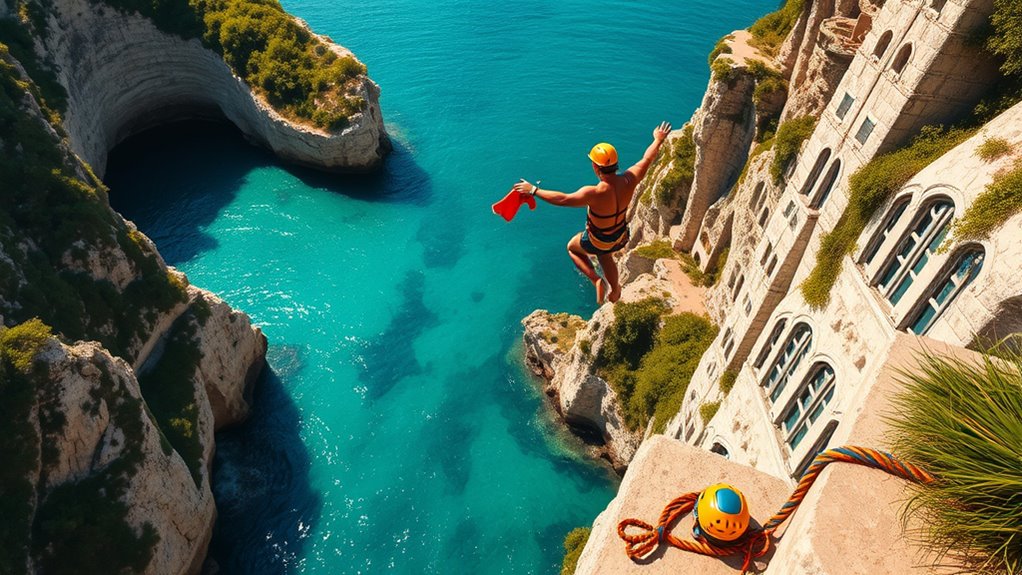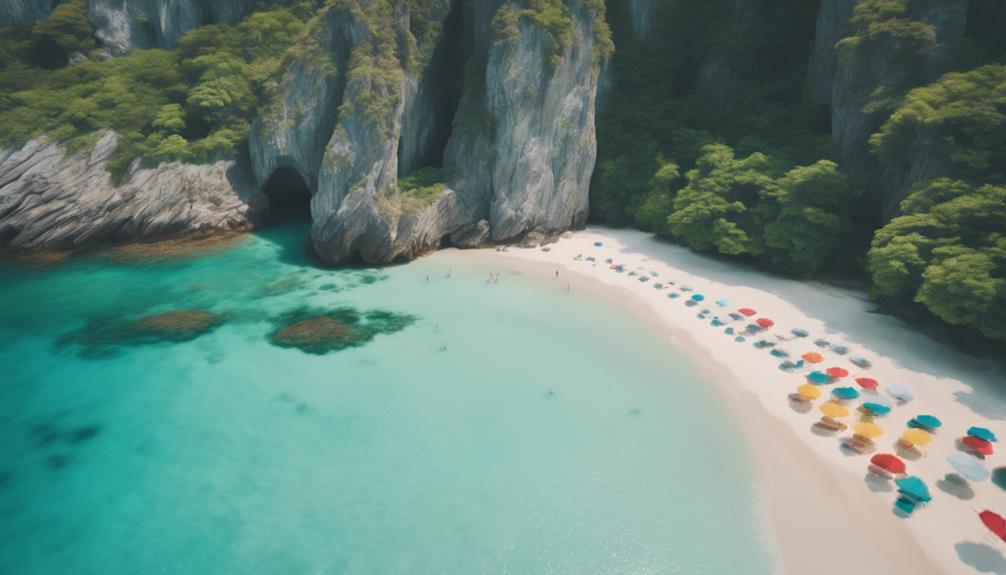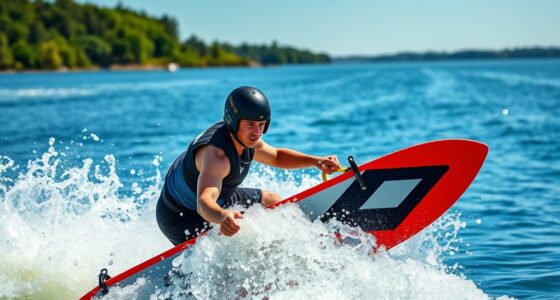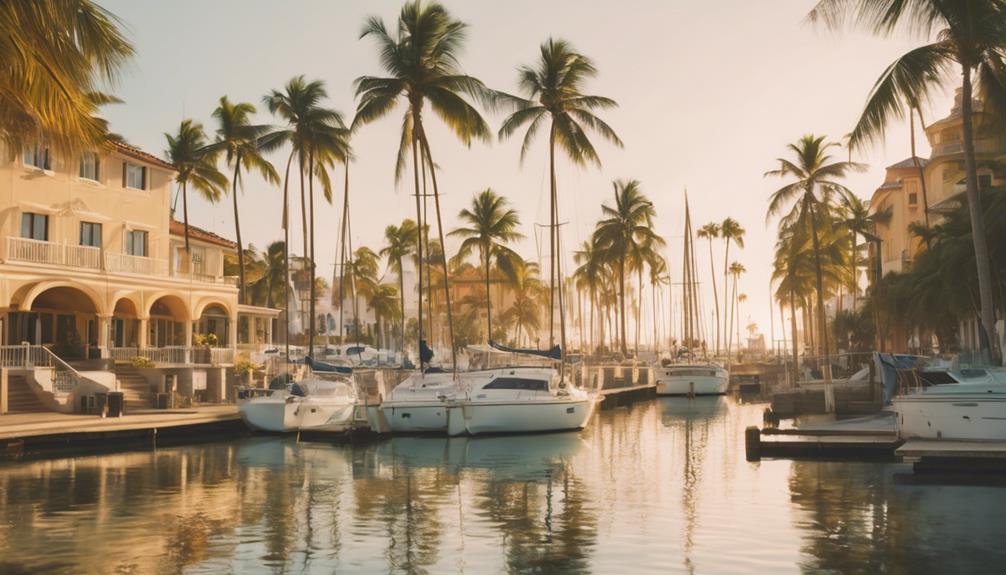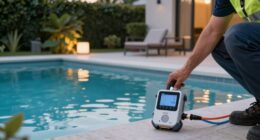To stay safe while cliff diving, assess the location thoroughly by checking water depth, clarity, and potential hazards like debris or rocks. Monitor weather and water conditions carefully, avoiding storms or strong currents, and always inspect your safety gear for any damage. Know your skill limits, practice proper jumping techniques, and have a spotter in place. Respect local rules and protect the environment. Keep these protocols in mind, and you’ll learn how to dive more responsibly.
Key Takeaways
- Assess environmental conditions, including water depth, clarity, and hazards, before each dive.
- Inspect all safety gear and equipment for damage and proper function.
- Evaluate personal skill level and start with lower heights, progressing gradually.
- Monitor weather and water conditions continuously, postponing if hazards are present.
- Maintain clear communication and establish emergency plans with spotters and nearby help.
Assessing the Diving Location and Water Conditions
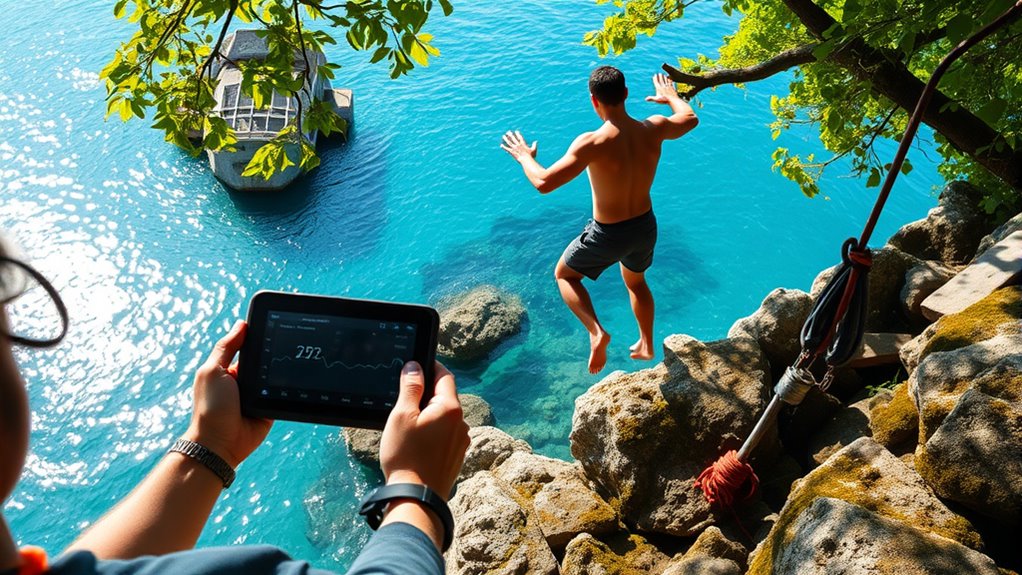
Before you dive, it’s essential to thoroughly evaluate the location and water conditions. Check the height of the cliff and ensure it matches your experience level. Look for clear water free of debris, rocks, or submerged hazards. Observe the water’s depth; it should be deep enough to safely land without hitting the bottom. Examine the shoreline for strong currents, rip tides, or changing water levels that could affect your jump. Identify any obstacles like boats, swimmers, or floating debris nearby. It’s also wise to visit the site at different times to understand how conditions vary. Never assume conditions are the same every time; always double-check before each jump to ensure safety. Proper assessment minimizes risks and prepares you for a safe dive. Additionally, understanding water conditions and how they fluctuate can help prevent accidents during your dive. Being aware of water quality can also alert you to potential health hazards such as algae blooms or contamination that might be present. Monitoring water temperature is important, as colder water can increase the risk of shock upon entry. Regularly assessing water movement can help detect sudden changes that could impact your safety. Recognizing environmental factors like weather patterns and recent rainfall can further improve your safety planning.
Checking Weather and Water Temperature

You need to check the weather forecast before jumping, as sudden storms can create dangerous conditions. It’s also vital to assess the water temperature, since cold water can impair your muscles and affect your safety. By monitoring these factors, you guarantee a safer and more enjoyable experience. Remember that beach safety guidelines help you stay informed about potential hazards and best practices. Additionally, understanding digital literacy can help you educate yourself about online risks related to outdoor activities and safety. Moreover, staying updated on lifestyle trends can inform you about new safety gear and innovative safety techniques that enhance your preparedness. Being aware of self watering plant pots concepts can also remind you of the importance of proper hydration and environmental awareness during outdoor activities.
Monitoring Weather Conditions
Monitoring weather conditions is essential to guarantee safe cliff diving experiences, as changing weather can dramatically impact water conditions and overall safety. Before you dive, check the forecast for wind speed, rain, and storm warnings. Strong winds can cause instability and rough water, increasing your risk. Sudden rain may reduce visibility and make surfaces slippery. Storms can bring unpredictable water currents and lightning. Keep an eye on real-time weather updates via reliable apps or local sources. Being aware of weather-related risks helps in making informed decisions to ensure safety during your dive. Additionally, understanding industry trends and staying updated on local advisories can further enhance your safety planning. Recognizing credit card security measures and ensuring your payments are protected can also be important for booking your trip or purchasing safety gear online. Regularly reviewing weather patterns specific to the area can help you anticipate and prepare for sudden changes. Familiarizing yourself with emergency response protocols can also be crucial if weather conditions worsen unexpectedly.
Assessing Water Temperature
Evaluating water temperature is a pivotal step in ensuring a safe cliff diving experience, especially when weather conditions shift unexpectedly. Before you dive, check local water temperature reports or use a waterproof thermometer to get accurate readings. Cold water can impair your muscles and reduce your reaction time, increasing the risk of injury. Conversely, warm water may be more comfortable but can lead to overheating if you stay in too long. Always consider the season and recent weather patterns, as sudden cold fronts or warm spells can affect water temperature quickly. If the water feels unusually cold or warm compared to reports, postpone your dive until conditions stabilize. Proper assessment helps prevent hypothermia, muscle cramps, and other safety hazards, ensuring a safer, more enjoyable experience. It is also recommended to wear protective gear such as wetsuits to help regulate your body temperature in varying water conditions. Additionally, understanding the role of contrast ratio in visual clarity can be metaphorically applied here—clear and accurate information enhances safety decisions in dynamic environments. Being aware of spoiled lemon juice signs can be likened to recognizing early warning signs of unsafe water conditions, ensuring you are better prepared. Regularly monitoring indoor air quality can also help you stay aware of environmental factors that may influence your safety during outdoor activities. Incorporating knowledge about mammography guidelines underscores the importance of evidence-based assessments, paralleling careful evaluation of water conditions for safe diving.
Inspecting Your Equipment and Safety Gear
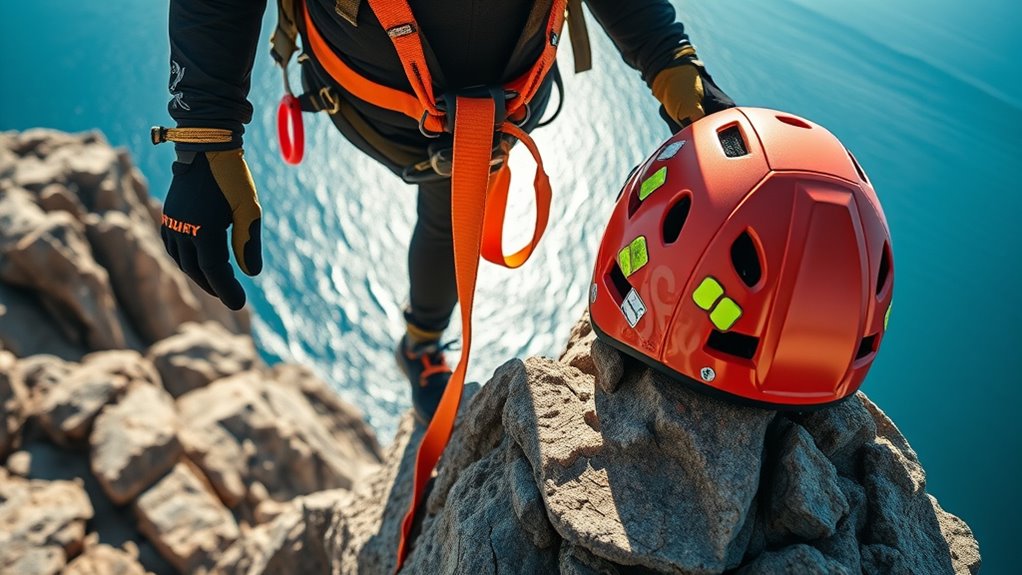
Before every jump, it’s vital to thoroughly inspect your equipment and safety gear to make certain everything is in peak condition. Check your harness for frays or tears, ensuring it’s securely fastened. Examine your helmet for cracks or dents that could compromise protection. Inspect your wetsuit or protective clothing for signs of wear or tears that might reduce effectiveness. Additionally, expert advice recommends regularly reviewing your gear’s maintenance and replacement schedule to ensure optimal safety during each dive. Confirm your harness buckles and straps are secure and functioning properly. Verify your helmet fits snugly without wobbling. Make sure your wetsuit or protective gear is intact and free of damage. Proper equipment maintenance and timely replacement are essential for safety and longevity, preventing unexpected failures during critical moments. Regularly checking your gear’s condition can help identify issues before they become hazardous. Taking these steps helps prevent equipment failure during your dive. Properly maintained gear boosts confidence and safety, making your jumps smoother and more secure. Never skip this critical inspection before taking the plunge.
Understanding Your Skill Level and Overcoming Fear

Ensuring your equipment is in top condition is a pivotal step, but knowing your own skill level and managing your fear are just as important for a safe cliff diving experience. Honestly assess what you can confidently handle; don’t push beyond your limits. If you’re new, start with smaller heights and gradually build your skills. Overcoming fear involves acknowledging it without letting it control you. Take deep breaths, visualize successful dives, and focus on your training. Remember, hesitation can lead to mistakes, so stay calm and committed. Confidence comes from preparation and practice. Recognize your comfort zone, and don’t let peer pressure or bravado tempt you into risky jumps. Respect your abilities and listen to your instincts—self-awareness is the foundation of safety in cliff diving. Additionally, understanding the health benefits of fruit juice varieties can promote overall well-being, which contributes positively to your physical readiness and mental focus during such adrenaline activities.
Planning Your Entry and Exit Strategies
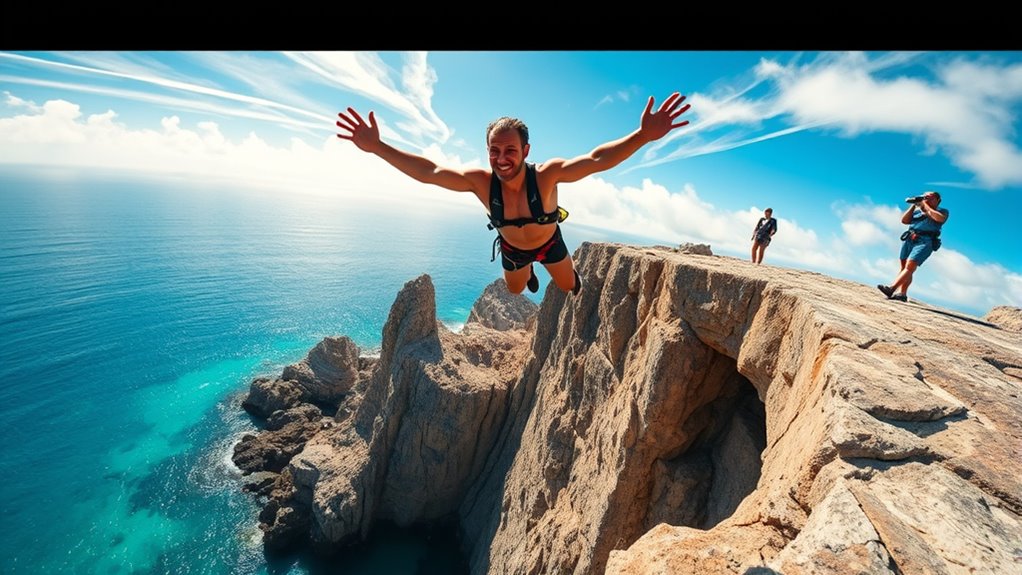
Before you take the plunge, it’s vital to assess water conditions to guarantee safety. You should also select stable, obstacle-free landing spots to prevent accidents. Planning your entry and exit routes carefully helps you stay in control and minimizes risks.
Assess Water Conditions
Evaluating water conditions is essential for a safe cliff dive, as the water’s depth, current, and clarity directly impact your entry and exit strategies. Before jumping, check the water’s depth to avoid shallow spots that could cause injury. Observe the current to ensure it’s gentle enough for a controlled entry and safe exit. Clear water helps you spot underwater hazards like rocks or debris and confirms there are no hidden dangers. Picture these conditions:
- Calm, still water with no visible debris or obstructions
- Consistent depth, free of sudden drop-offs
- Clear water allowing you to see underwater hazards easily
Always assess these factors carefully, as they influence your safety and planning. Properly understanding water conditions ensures you can execute your dive confidently and exit safely.
Choose Safe Landing Spots
Choosing safe landing spots is essential to your overall safety during a cliff dive. Before jumping, scan the area for clear, obstacle-free water. Look for spots with a gentle slope or calm surface, avoiding rocks, tree branches, or submerged objects. Confirm the water is deep enough—at least 12-16 feet—to prevent injuries upon impact. Avoid areas with strong currents or choppy conditions, as they can be unpredictable. Always check for signs of recent activity, like footprints or other divers, which suggest the spot is suitable. Plan your entry and exit routes carefully, ensuring you have quick access to a safe exit point afterward. Taking these steps minimizes risks and keeps you safe throughout your dive.
Practicing Proper Jumping Techniques

To guarantee a safe and enjoyable cliff diving experience, mastering proper jumping techniques is essential. You want to assure your jump is controlled and smooth. Before jumping, keep your body straight, arms close to your sides, and focus on your landing point. As you leap, tuck your chin slightly and keep your eyes on the water. When you hit the water, aim to enter feet first to reduce impact. Visualize your jump as a sequence:
- Approach with a steady run or step, maintaining balance
- Leap with controlled momentum, avoiding over-rotation
- Tuck your body to streamline and prepare for a clean entry
Practicing these steps helps prevent injuries and improves your confidence. Consistent technique ensures each dive is safe, controlled, and enjoyable.
Recognizing and Responding to Potential Hazards
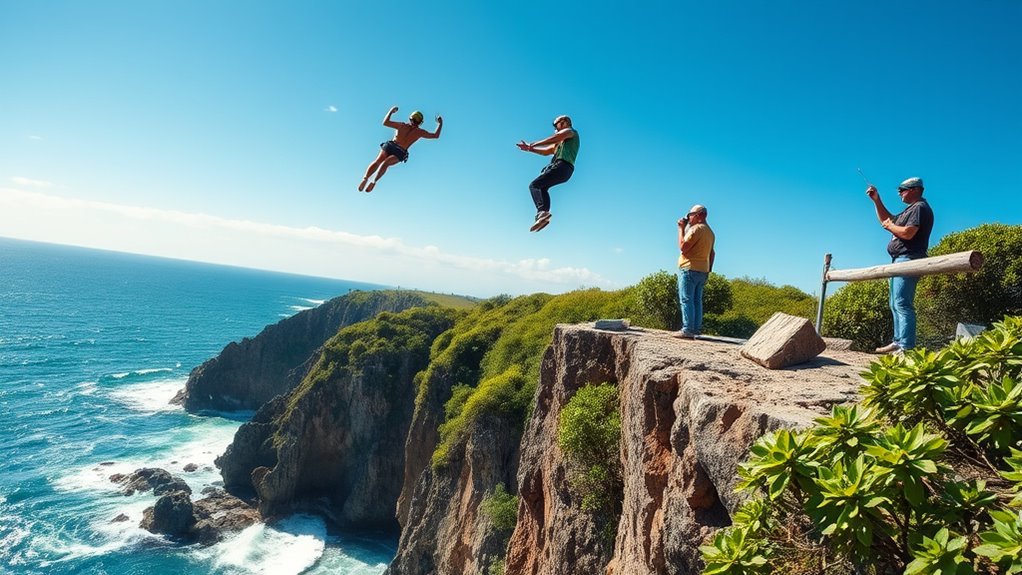
Understanding your surroundings before jumping is key to staying safe. Scan the water for rocks, debris, or sudden changes in depth that could pose a risk. Check the weather—strong winds or rain can make landing unpredictable. Observe the water’s surface for ripples or waves indicating hidden hazards below. Be alert to other divers or boats nearby, as their movements can create unexpected currents. If you notice anything unusual or dangerous, don’t jump. Instead, reassess the situation, wait for calm conditions, or choose a safer spot. Recognizing hazards early allows you to respond effectively, minimizing injury risk. Always trust your instincts—if something feels off, it’s better to postpone your dive than risk an accident. Staying vigilant keeps you safe and enhances your diving experience.
Having a Spotter and Emergency Plan in Place
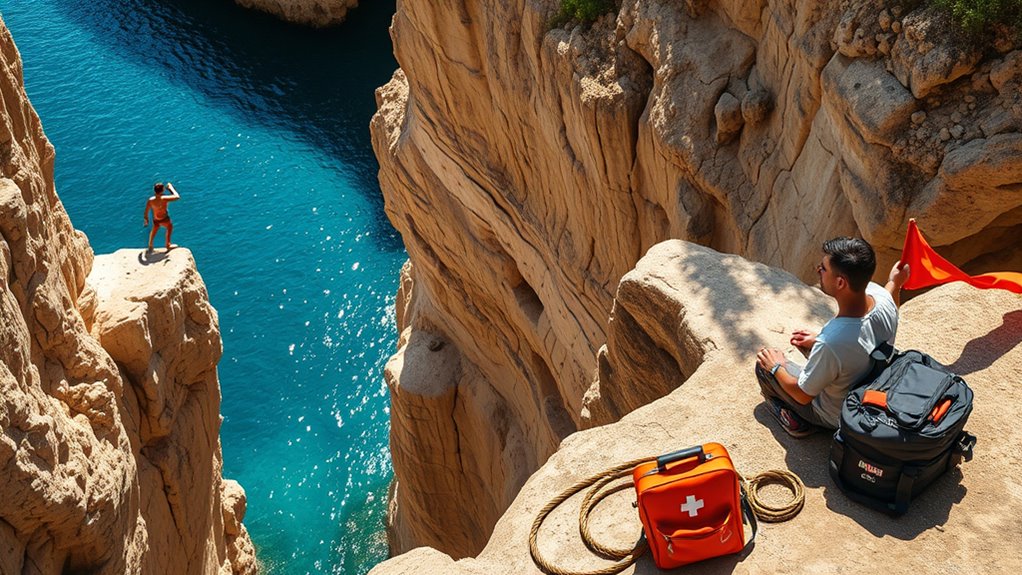
Having a spotter and an emergency plan is essential for safe cliff diving. Your spotter keeps an eye on you, watches for signs of trouble, and can alert others if needed. An emergency plan guarantees you’re prepared for unexpected situations. For example, you should:
Having a spotter and an emergency plan is vital for safe cliff diving.
- Have a clear communication method, like hand signals or a whistle, to quickly signal distress or readiness.
- Know the quickest route to medical help or the nearest phone to call emergency services.
- Establish a designated meeting point if you get separated from your group.
Respecting Local Regulations and Environmental Guidelines
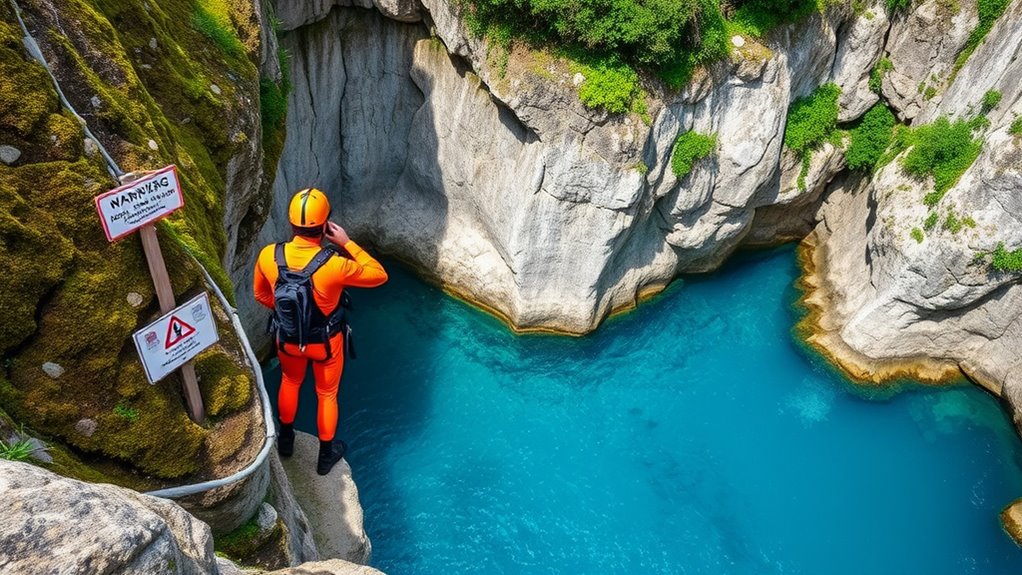
Ensuring your safety while cliff diving also means respecting the rules and protecting the environment. Before you dive, research local regulations, permits, and restrictions. Ignoring these can lead to fines or dangerous situations. Always follow posted signs and guidance from authorities. Respect environmental guidelines by avoiding damage to plants, wildlife, and natural features. Don’t disturb local ecosystems or leave trash behind. Stick to designated swimming and diving areas to prevent erosion and protect marine life. Remember, responsible behavior not only keeps you safe but also preserves the beauty of the location for others. By respecting local rules and environmental guidelines, you demonstrate respect for the community and nature, ensuring everyone can enjoy these incredible spots safely and sustainably.
Frequently Asked Questions
What Are Common Injuries Associated With Cliff Diving?
When you ask about common injuries from cliff diving, you should know that impacts can cause bruises, cuts, or fractures. You might also experience sprains or dislocations if you land awkwardly. Head and neck injuries are risks if you hit underwater rocks or the water surface at high speed. To stay safe, always check the water depth, avoid risky spots, and practice proper diving techniques to minimize these injuries.
How Do I Select the Safest Diving Spot?
To select the safest diving spot, you should first research locations known for their safety records. Look for clear, calm water free of rocks or debris, and choose spots with accessible exits. Visit beforehand if possible, check for signs or barriers, and ask local experts or experienced divers for advice. Always assess water depth and confirm there are no strong currents or obstacles before diving.
What Should I Do if I Get Injured During a Dive?
If you get injured during a dive, stay calm and assess the situation. Don’t move if you suspect a serious injury, especially to your neck or spine. Call for help immediately or signal someone nearby. If possible, apply pressure to stop bleeding and keep the injured area still. Remember, it’s essential to seek professional medical assistance as soon as possible to prevent further harm.
Are There Specific Health Conditions That Prevent Safe Diving?
Certain health conditions can make diving unsafe for you. If you have heart problems, high blood pressure, or neurological issues, diving could trigger complications or worsen your condition. Asthma or respiratory issues also pose risks, especially at higher altitudes or deep water. Always consult your doctor before diving, and disclose any health concerns. Your safety depends on understanding your limits and ensuring you’re physically fit to dive.
How Does Altitude Affect Cliff Diving Safety?
Did you know that altitude can increase the risk of injury by up to 30%? When you dive from higher elevations, the thinner air reduces oxygen, making you more prone to dizziness or fatigue. This can impair your judgment and coordination, increasing accident risk. So, when considering altitude, be extra cautious—check the air quality, pace yourself, and guarantee your body is well-prepared to handle the change in environment for safe dives.
Conclusion
Remember, safety is your guiding star in the daring sky of cliff diving. Respect the waters and heed every warning, like a compass pointing true north. With preparation and caution, you’ll navigate this thrilling adventure like a seasoned sailor steering through calm seas. Embrace the thrill, but never let fear drown your judgment. Stay vigilant, follow your safety map, and let each leap be a dance with the ocean’s wild, beautiful rhythm.

